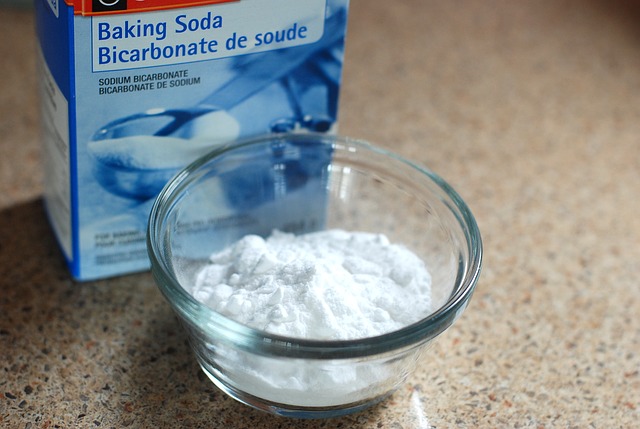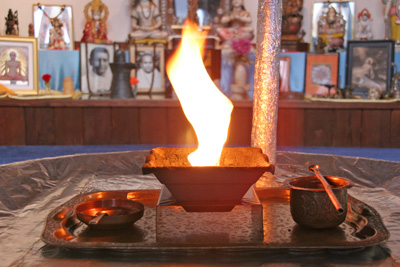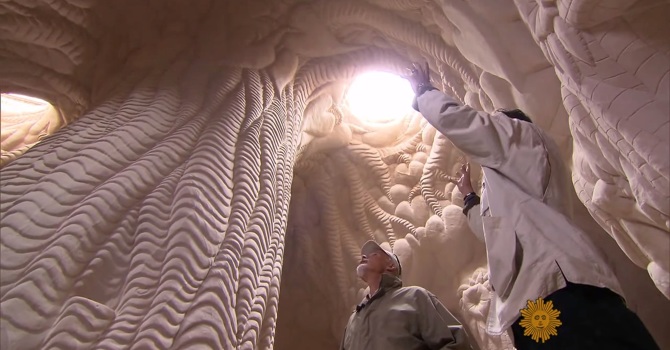Posted by Sharing Sustainable Solutions
Baking soda is actually sodium bicarbonate (also known as bicarbonate of soda). It is found naturally in mineral deposits, lake sediments, and groundwater. It is even found in our oceans where its bicarbonate
chemistry seemingly works to stabilize the carbon dioxide content of the earth’s atmosphere.
Virtually all baking soda in North America today comes from the mined mineral, trona, which can be found in large amounts in one place- GreenRiver, Wyoming. (Other large deposits of trona can be found in Kenya, Egypt,Venezuela and the deserts of Central Asia.) This massive deposit was discovered in the 1930s on federal lands.
Trona is actually half sodium bicarbonate and half its chemical cousin, sodium carbonate, some of which ends up as the more familiar washing soda. Trona is deep mined as opposed to an open-pit procedure. The ore is brought to the surface, crushed, washed and heated to make sodium carbonate. When this is dissolved in water and carbon dioxide is bubbled throughout the solution, sodium bicarbonate crystals form and fall out of the solution. These crystals then go through a washing and drying process before the product is packaged and distributed.
Baking Soda is manufactured in one other factory–a natural factory: the human body. Here it maintains the correct acidity level (or pH) of the blood stream. It is found in our saliva, where it neutralizes the plaque acids in our mouth to prevent teeth from dissolving.
The same body production of sodium bicarbonate neutralizes stomach acids to help prevent ulcers. It helps people to breathe by carrying carbon dioxide from bodily tissue to the lungs,where it is exhaled.
Amazing ! How–and Why–Does it Work?
Baking soda has a few fundamental qualities which overlap: 1) It has a soft crystalline molecular quality. 2) It has the ability to neutralize acidity. 3) It is a leavening agent. 4) It is able to absorb many odors.
Abrasive Ability: Baking soda’s first attribute makes it mildly abrasive, which is why its known for its gentle yet effective cleaning ability. It is soluble in water,which allows the crystals to “round off ” and dissolve before they can scratch or damage a surface.
A Natural Neutralizer: Baking soda’s ability to buffer or neutralize acids naturally (keeping the pH as close to neutral as possible) enables it to work in a wide range of seemingly unconnected applications. It can modify kitchen odors before they evaporate and smell bad, as well as neutralize acid corrosion on car battery terminals, and neutralize the acid in mosquito venom which is what causes such bites to itch.
Baking soda can even be used to reduce the corrosion of drinking water in municipal water supplies, therefore reducing lead and copper toxicity.
There are many medicinal uses for baking soda. It is used in kidney dialysis to reduce the level of acids in the bloodstream and as a antacid to control acid indigestion. It can even act to prevent microbial growth in food products.
Dirt and grease are usually composed of fatty acids that can be neutralized by baking soda, too. Once neutralized, the fatty acids dissolve in water and can be easily wiped away.
Baking soda can neutralize unpleasant airborne odors (because odors are usually acid-based, much like sour milk smelling bad) because it chemically neutralizes them too. Baking soda also works on our own body odors, pet urine odors or the mouth-plaque that causes bad-breath.
Other products often rely on added fragrances which mask odors; with baking soda such odors
are actually gone because the offensive smell has been absorbed.
A Baking Boon: Its leavening abilities in cooking are also rooted in acid-base chemistry. When baking soda is mixed with an acid (such as milk, chocolate, vinegar, lemon juice, or large amounts of honey or molasses) it neutralizes the acid component and releases carbon dioxide air bubbles. This is turn causes the mixture to rise from these carbon dioxide bubbles that are now trapped by the gluten–the stretchy protein in wheat flour. Not only does it work this way for cakes, muffins and other baked goods–both commercial and homemade–but it can also be used to make brittle candies airy and porous.
Baking soda is often confused with baking powder since they leaven in much the same way. Baking powder, however, is a combination of both baking soda and an acid (such as cream of tarter) with which it will react when added to a liquid. Therefore it works well in recipes that do not include other acid ingredients.
Today’s double-acting baking powder acts in two ways because it contains two types of acids.
One is activated by moisture, the other is activated by heat. The additional tiny air bubbles released during the baking process create a finer texture to baked goods. (Be aware that too much additional baking powder can result in a “sunken” baked product. Proportions count. This is one situation where “more” is not necessarily better.)
Other Traits: Baking soda has other uses that are not related to its abrasive, buffering or baking abilities. For one, it works as a fire extinguisher when applied to a grease or electrical fire.
It is also used in water softening products because it does just that. It is used for biological and medicinal purposes as an ingredient in over-the-counter and prescription drugs.
In the plant care world, it is sometimes used to control the development of mold, fungus and mildew. It is used in animal feed lots. It is blended into feed for cows to maximize milk output so beef cattle maintain their maximum weight gain.
Its added to chicken feed to produce tougher egg shells and control the amount of sodium chloride. The list goes on….
Found @ Sharing Sustainable Solutions








